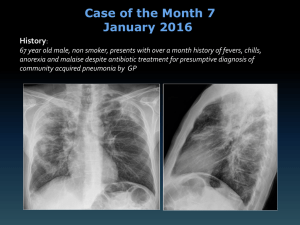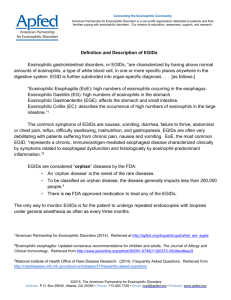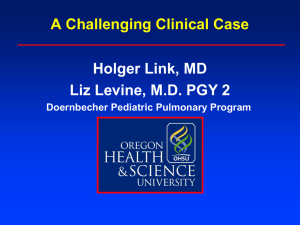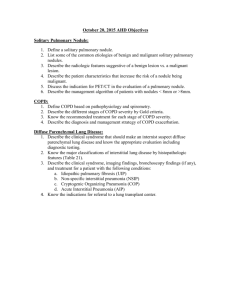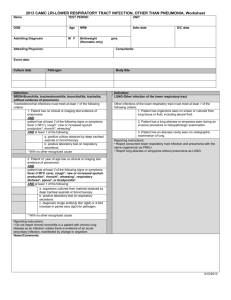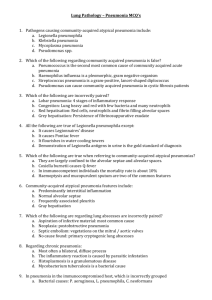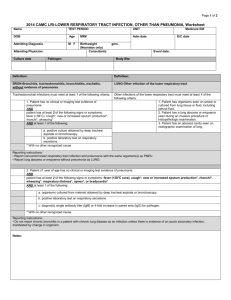Chronic Eosinophilic Pneumonia Mimicking COPD Exacerbation
advertisement
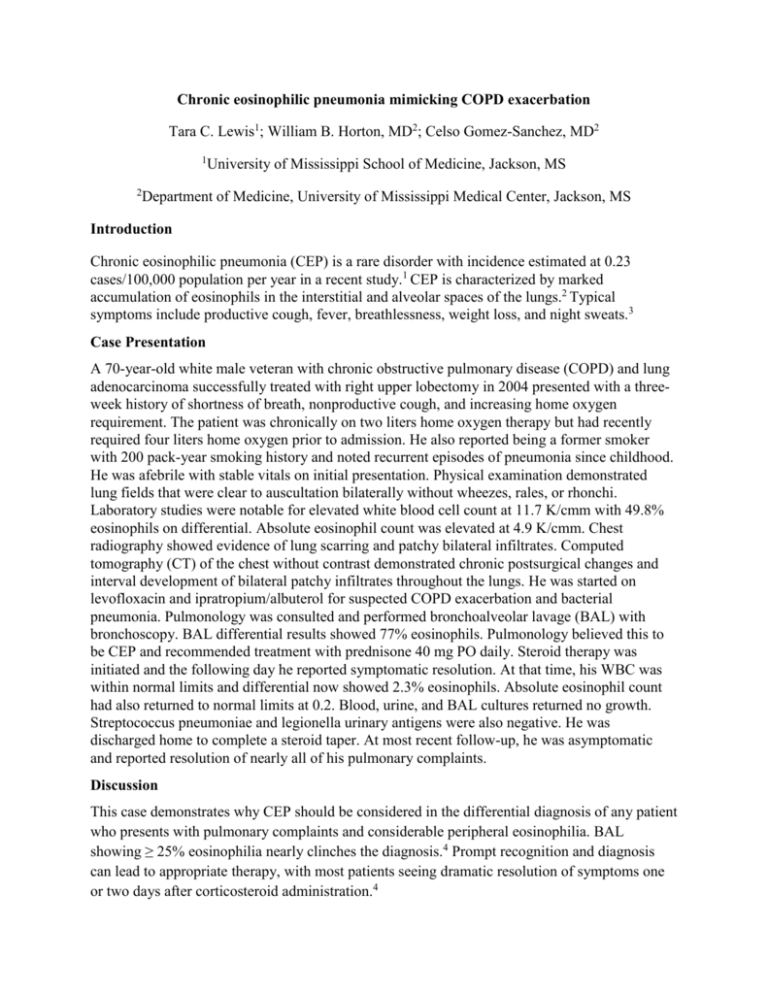
Chronic eosinophilic pneumonia mimicking COPD exacerbation Tara C. Lewis1; William B. Horton, MD2; Celso Gomez-Sanchez, MD2 1 2 University of Mississippi School of Medicine, Jackson, MS Department of Medicine, University of Mississippi Medical Center, Jackson, MS Introduction Chronic eosinophilic pneumonia (CEP) is a rare disorder with incidence estimated at 0.23 cases/100,000 population per year in a recent study.1 CEP is characterized by marked accumulation of eosinophils in the interstitial and alveolar spaces of the lungs.2 Typical symptoms include productive cough, fever, breathlessness, weight loss, and night sweats.3 Case Presentation A 70-year-old white male veteran with chronic obstructive pulmonary disease (COPD) and lung adenocarcinoma successfully treated with right upper lobectomy in 2004 presented with a threeweek history of shortness of breath, nonproductive cough, and increasing home oxygen requirement. The patient was chronically on two liters home oxygen therapy but had recently required four liters home oxygen prior to admission. He also reported being a former smoker with 200 pack-year smoking history and noted recurrent episodes of pneumonia since childhood. He was afebrile with stable vitals on initial presentation. Physical examination demonstrated lung fields that were clear to auscultation bilaterally without wheezes, rales, or rhonchi. Laboratory studies were notable for elevated white blood cell count at 11.7 K/cmm with 49.8% eosinophils on differential. Absolute eosinophil count was elevated at 4.9 K/cmm. Chest radiography showed evidence of lung scarring and patchy bilateral infiltrates. Computed tomography (CT) of the chest without contrast demonstrated chronic postsurgical changes and interval development of bilateral patchy infiltrates throughout the lungs. He was started on levofloxacin and ipratropium/albuterol for suspected COPD exacerbation and bacterial pneumonia. Pulmonology was consulted and performed bronchoalveolar lavage (BAL) with bronchoscopy. BAL differential results showed 77% eosinophils. Pulmonology believed this to be CEP and recommended treatment with prednisone 40 mg PO daily. Steroid therapy was initiated and the following day he reported symptomatic resolution. At that time, his WBC was within normal limits and differential now showed 2.3% eosinophils. Absolute eosinophil count had also returned to normal limits at 0.2. Blood, urine, and BAL cultures returned no growth. Streptococcus pneumoniae and legionella urinary antigens were also negative. He was discharged home to complete a steroid taper. At most recent follow-up, he was asymptomatic and reported resolution of nearly all of his pulmonary complaints. Discussion This case demonstrates why CEP should be considered in the differential diagnosis of any patient who presents with pulmonary complaints and considerable peripheral eosinophilia. BAL showing ≥ 25% eosinophilia nearly clinches the diagnosis.4 Prompt recognition and diagnosis can lead to appropriate therapy, with most patients seeing dramatic resolution of symptoms one or two days after corticosteroid administration.4 References 1. Sveinsson OA, Isaksson HJ, Gudmundsson G. Chronic eosinophilic pneumonia in Iceland: clinical features, epidemiology, and review. Laeknabladid 2007; 93(2): 111-116. 2. Allen JN, Davis WB. Eosinophilic lung diseases. Am J Respir Crit Care Med 1994; 150(5): 1423-1438. 3. Jederlinic PJ, Sicilian L, Gaensler EA. Chronic eosinophilic pneumonia. A report of 19 cases and a review of the literature. Medicine (Baltimore) 1988; 67(3): 154-162. 4. Marchand E, Reynaud-Gaubert M, Lauque D, et al. Idiopathic chronic eosinophilic pneumonia. A clinical and follow-up study of 62 cases. The Groupe d’Etudes et de Recherche sur les Maladies “Orphelines” Pulmonaires (GERM”O”P). Medicine (Baltimore) 1998; 77(5): 299-312.
